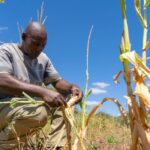
Cocoa fruit contains other valuable ingredients that have been underutilised until now, the researchers say.
Scientists in Switzerland have invented a way to make chocolate healthier and more sustainable.
No Oompa Loompas, chocolate rivers or magical gum were involved in the making of this new treat – simply a fresh look at the whole cocoa fruit.
Typically, only cocoa beans and pulp are extracted for our chocolate bars. But researchers at the ETH Zurich federal technology institute have discovered that the cocoa pod husk can be used too, as a replacement for granulated sugar.
Their new recipe involves taking what’s known as the endocarp, the inner layer of the fruit shell, and mixing it with some of the pulp surrounding the beans to make a sweet cocoa jelly.
“This means that farmers can not only sell the beans, but also dry out the juice from the pulp and the endocarp, grind it into powder and sell that as well,” explains Kim Mishra, lead author of the study published in the journal Nature Food.
“This would allow them to generate income from three value-creation streams. And more value creation for the cocoa fruit makes it more sustainable.”
How is the new Swiss chocolate made exactly?
When you’re dealing with such a desirable foodstuff as chocolate, only a close replacement will do. Finding the perfect recipe involved a lot of trial and error from the scientists in the lab, who worked with start-up Koa and Swiss chocolate manufacturer Felchlin.
Too much fruit juice from the pulp made the chocolate clumpy, while too little resulted in an insufficiently sweet taste. They found the product can contain up to 20 per cent of the cocoa gel, which compares to the sweetness of conventional chocolate with around 5 to 10 per cent added sugar. Regular dark chocolate can contain around 40 per cent powdered sugar.
The new cocoa-fruit chocolate is healthier for us, according to the researchers, since it has a higher fibre content and reduced saturated fat percentage.
Why is the new chocolate recipe more sustainable?
“A cradle-to-factory life cycle assessment shows that large-scale production of this chocolate could reduce land use and global warming potential compared with average European dark chocolate production,” the researchers write.
Land-use change from farming is responsible for over 70 per cent of environmental impacts for all chocolates, they explain. So by using fewer cocoa beans and therefore less land, the lab chocolate is linked to lower ‘farm impacts’.
It does require more processing than the average European bar – with the heating up of the endocarp powder responsible for most of these ‘factory impacts’. But overall the cocoa-fruit chocolate creation has a lighter carbon footprint when scaled up.
The new formulation treads lighter on the environment in other ways too, since it uses part of the cocoa pod that would otherwise go to waste. Only the shell is left, which is traditionally used as fuel or composting material.
By bringing the endocarp into the equation, small-scale farmers are also able to diversify their product offerings and increase their income.
How can cocoa-fruit chocolate be scaled up?
There’s still a long way to go before this thriftier form of chocolate hits our shelves, however.
“Although we’ve shown that our chocolate is attractive and has a comparable sensory experience to normal chocolate, the entire value creation chain will need to be adapted, starting with the cocoa farmers, who will require drying facilities,” says Mishra.
“Cocoa-fruit chocolate can only be produced and sold on a large scale by chocolate producers once enough powder is produced by food processing companies.”
But an important first step has been taken: ETH has filed a patent for its cocoa-fruit chocolate recipe.
It’s a sign of the researchers’ confidence in their product, with its appealing nutritional, socio-economic and eco benefits.
Source: Euronews





